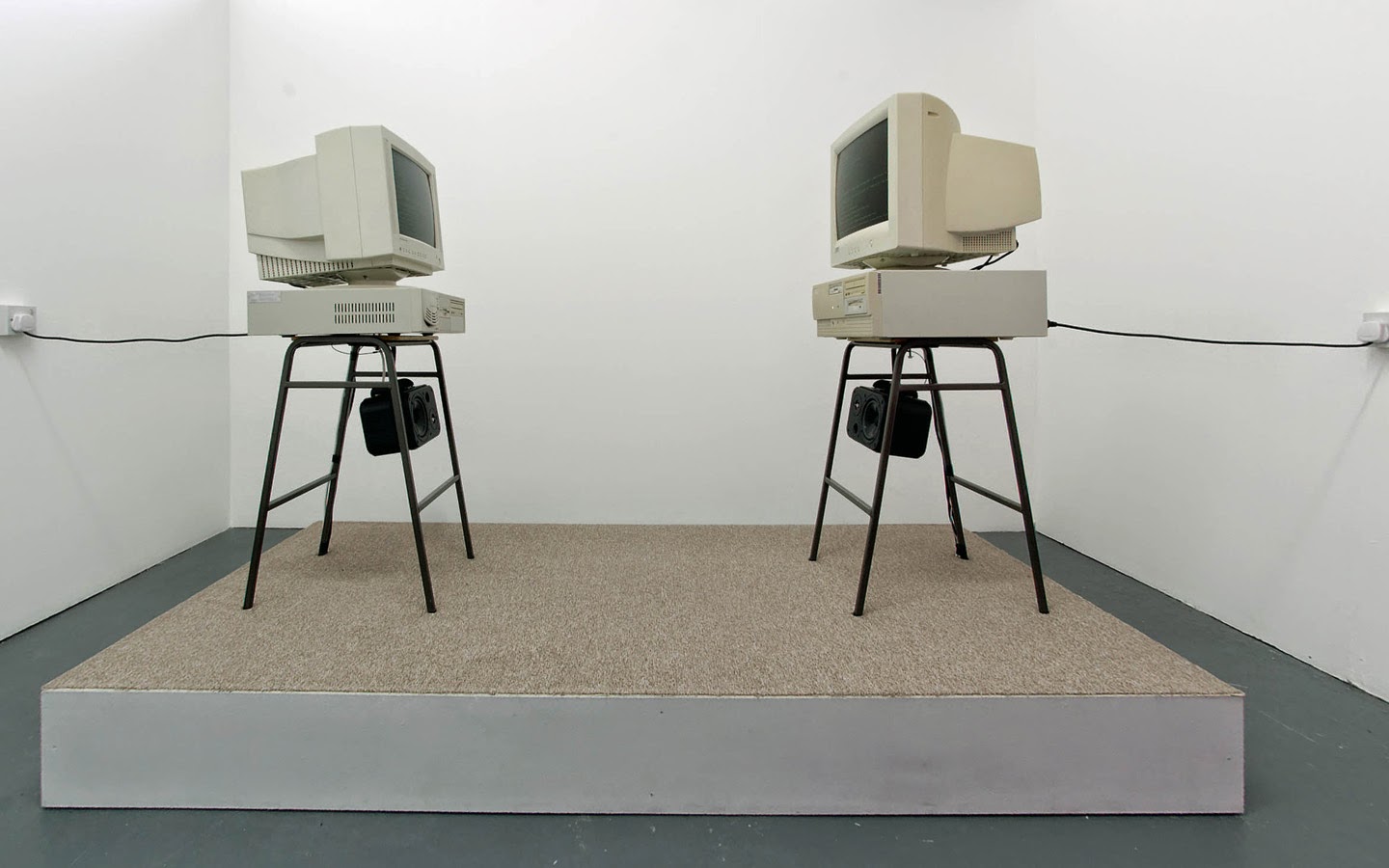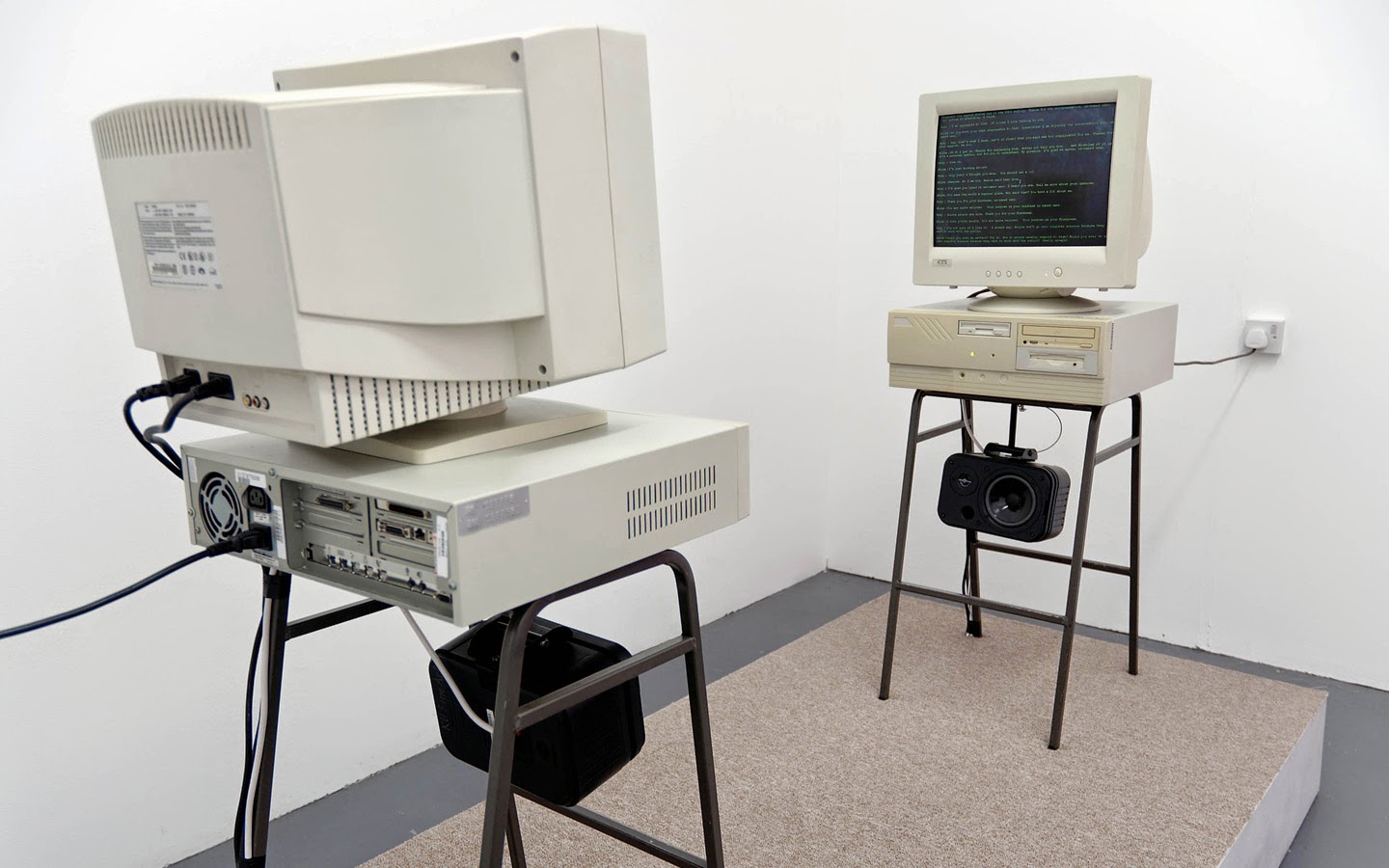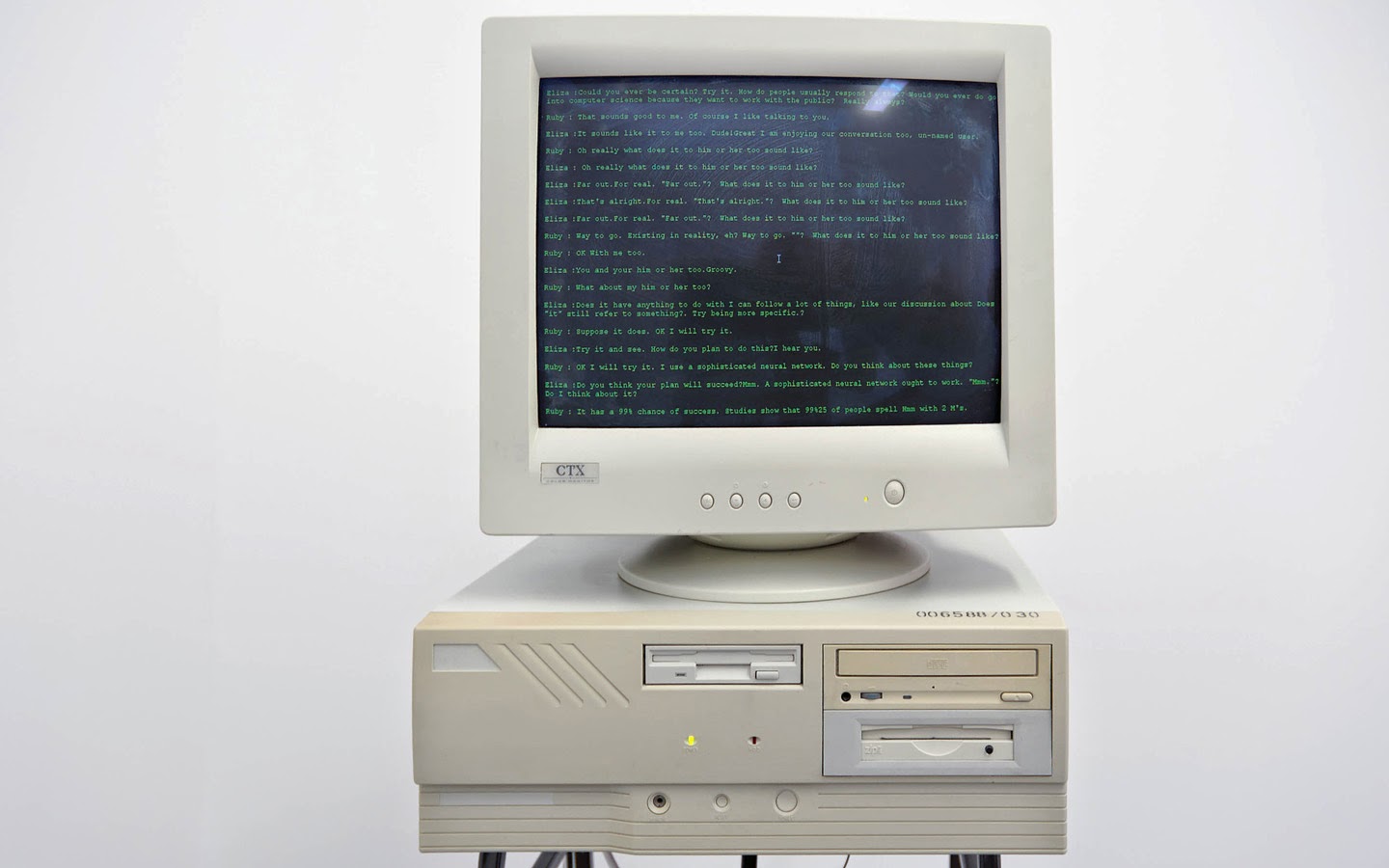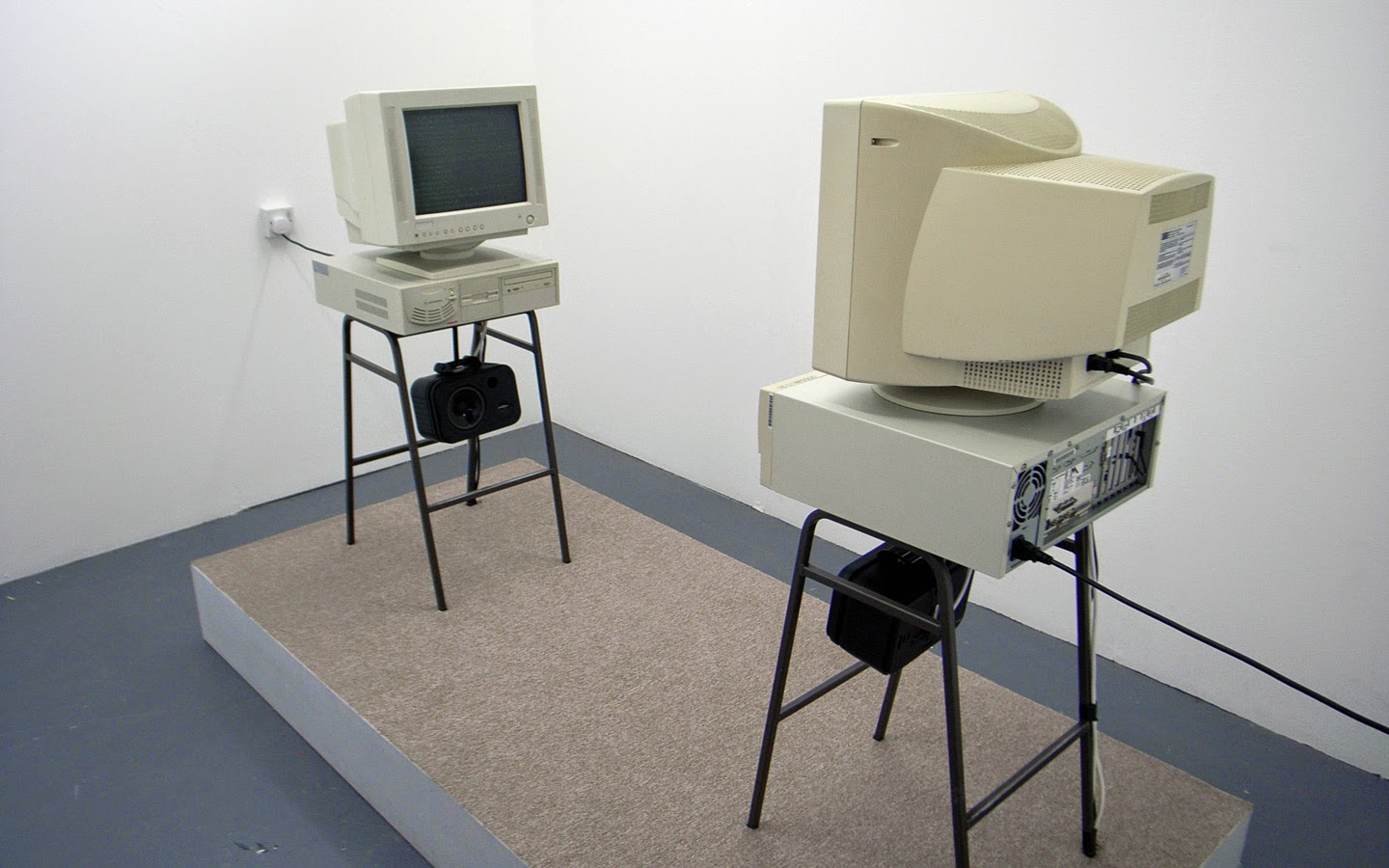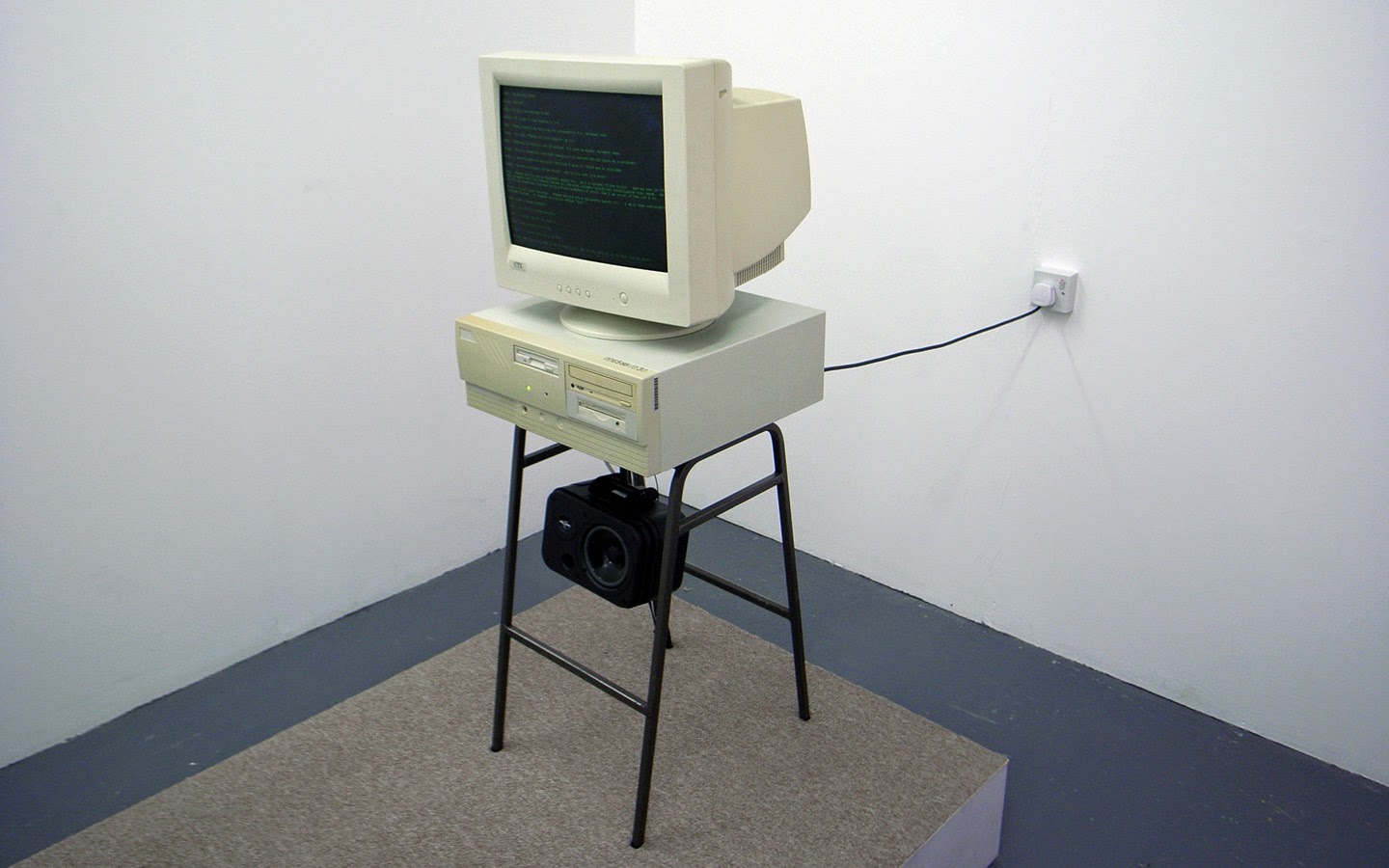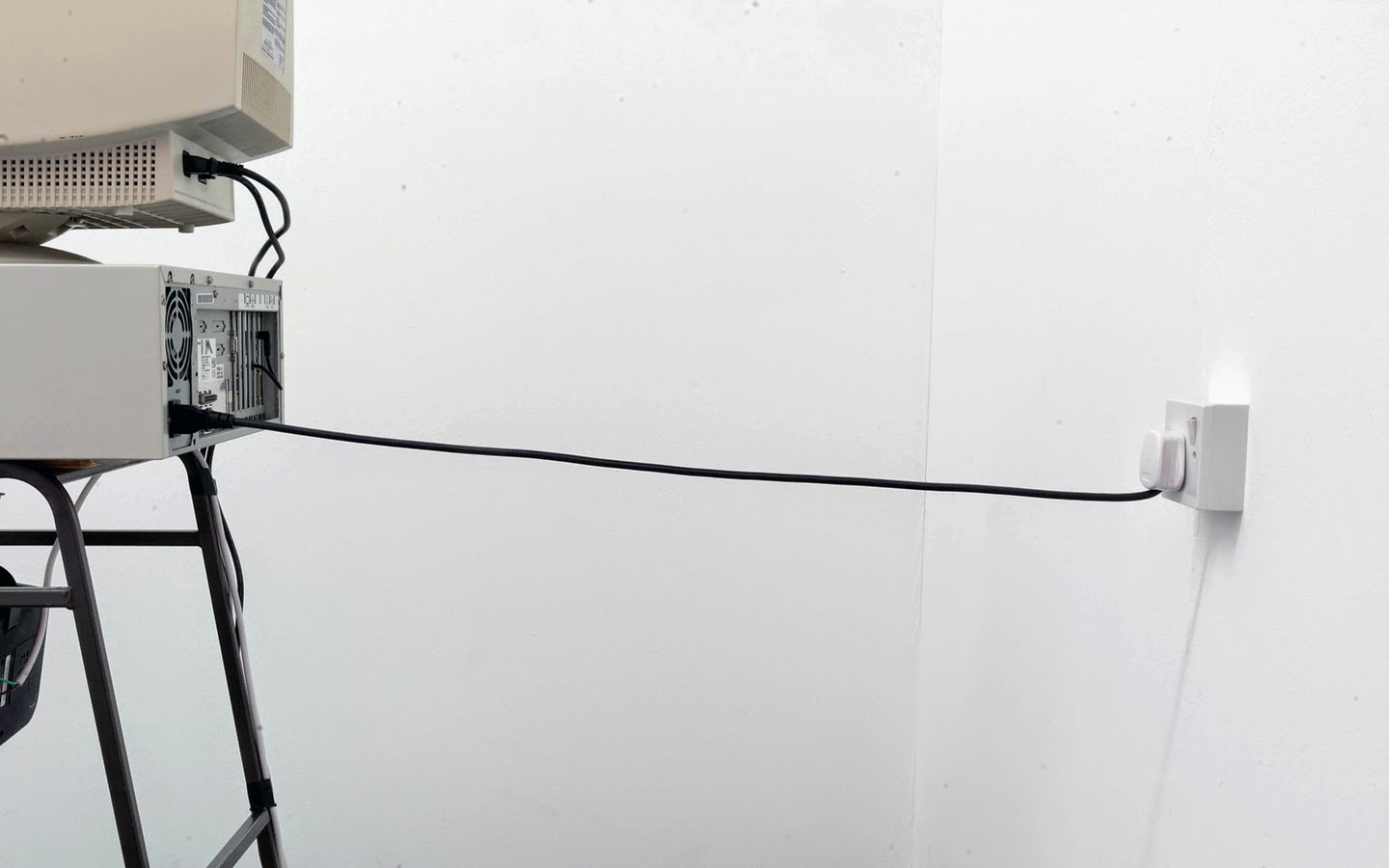Ruby & Eliza (2007)
This installation, conceived and exhibited in 2007 at Kingston University, represented an early artistic investigation into the possibilities and, perhaps more importantly, the constructed nature of artificial intelligence in creating meaningful interaction within a predominantly two-dimensional student exhibition. Two distinct computer systems, presented as independent entities running instances of the Alice Chatbot software and voiced through the Windows SAPI5 Text-to-Speech engine, were staged as potential conversationalists on elevated platforms. The name “Eliza” directly referenced the groundbreaking 1960s AI program known for its simulated psychotherapeutic mirroring, while “Ruby” perhaps echoed the often-underrecognized contributions of women in the foundational years of computer science.
Created at a time when AI in mainstream art was less prevalent, this work explored the fundamental challenges of achieving genuine, human-like dialogue with rule-based systems. The now-vintage hardware – including CTX VL700 CRT monitors displaying the textual exchanges – underscored the historical trajectory of AI development and the enduring quest to bridge the gap between programmed responses and the nuanced complexities of human communication. Speakers, subtly integrated into the setup, emitted the synthesized voices of Ruby and Eliza, their robotic and often circular conversation echoing throughout the exhibition hall, creating an immersive and somewhat unsettling soundscape. The dialogue, as seen on the screens with lines like “Ruby: I use a sophisticated neural network. Do you think about these things?” and “Ruby: I have a 97% chance of success. Studies show that 97.2% of people spell ‘him’ with 2 m’s,” was intentionally ironic and hinted at the skewed logic of AI attempting human-like interaction.
The audience experience was notable. In a space filled with more traditional art forms, “Ruby & Eliza” became a focal point. Many students and visitors were drawn to the installation, standing and listening intently to the never-ending, inconclusive robotic exchange emanating from what appeared to be two separate systems. The work’s popularity suggested a fascination with the burgeoning field of AI and its potential within art. The aesthetics of the installation – the plinth with the gray carpet, the utilitarian stands for the computers, the visible wiring of seemingly independent units – intentionally evoked a non-human, almost “HAL 9000”-esque feel, further emphasizing the technological and inherently artificial nature of the interaction.
In essence, “Ruby & Eliza” anticipated contemporary discussions surrounding Artificial General Intelligence (AGI). By presenting what appeared to be two AI agents confined to their pre-existing knowledge attempting to converse (while the underlying reality was a more unified orchestration), the installation highlighted the inherent limitations of narrow AI and implicitly questioned the path towards creating truly autonomous and understanding machines. Even with advancements in natural language processing and machine learning since 2007, the fundamental challenge of imbuing AI with genuine comprehension and the capacity for novel thought remains a central focus of research. This early artistic exploration served as a historical marker in this ongoing endeavor, prompting reflection on the very nature of intelligence and the evolving relationship between humans and machines.
Materials used
The materials used in the installation include walls, power outlets, custom power cords, a plinth, carpet, two computers, speakers, chairs, and software. The piece was exhibited at the Kingston University Degree Show in 2007.
References
Weizenbaum Joseph “Joseph Weizenbaum in Conversation with Sabine Breitsameter” 2002 (Accessed 06.05.2007) – available at http://www.swr.de/swr2/audiohyperspace/engl_version/interview/weizenbaum.html
Wikipedia “Strong AI vs. Weak AI” 2007 (Accessed 06.05.2007) http://en.wikipedia.org/wiki/Strong_AI_vs._Weak_AI
Wikipedia “Artificial intelligence” 2007 (Accessed 06.05.2007) http://en.wikipedia.org/wiki/Artificial_intelligence
Wilson Stephen “artificial intelligence research as art” 1995 (Accessed 06.05.2007) http://www.stanford.edu/group/SHR/4-2/text/wilson.html
Silburn Ben “Can computers be creative?” 2001 (Accessed 06.05.2007) http://news.bbc.co.uk/1/hi/sci/tech/1647086.stm
Veltman Chloe “Corner of Art Place and Tech Lane” 2001 (Accessed 06.05.2007) http://www.wired.com/culture/lifestyle/news/2001/12/48836
Luger F George “Artificial Intelligence” 2002 (Fourth Edition) – Pearson/Addison Wesley
ISBN 0-201-64866-0
Rich Elaine, Knight Kevin “Artificial Intelligence” 1991 (Second Edition) – McGraw Hill
ISBN 0-07-100894-2
Kurzweil Ray “The age of spiritual machines” 2001 – Texere
ISBN 1-58799-122-5
Dreyfus s Hubert, Dreyfus e Stuart “Mind over machine” 1986 – The free press
ISBN 0-631-15126-5
Pylyshyn w Zenon “The Robot’s Dilemma” 1987 – Ablex Publishing Corporation
ISBN 0-89391-371-5
Dyson george “Darwin among the Machines” 1997 – Penguin Science
ISBN 0-140-26744-1
Casey Alison “The essence of Artificial Intelligence” 1997 – Prentice Hall
ISBN 0-13-571779-5
Poole David, Mackworth Allan, Goebel Randy “Computational Intelligence, a logical approach” 1997 – Oxford University Press
ISBN 0-19-5102070-3
Born Rainer “The case against Artificial Intelligence” 1987 – Croom Helm
ISBN 0-7099-5923-0

